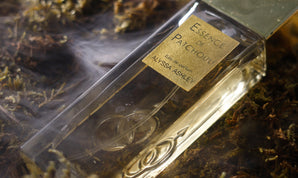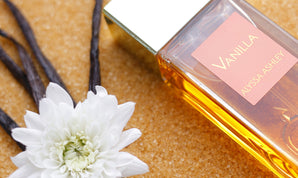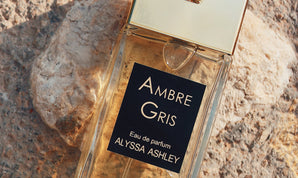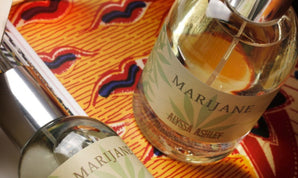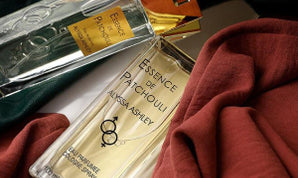The tourist season of summer is now over.
Autumn gains ground on the Maritime Alps, the colours change and tend to warmer shades, temperatures decrease.
Our senses sharpen.
The first feelings to project us into autumn are the scents of wet leaves, bark and the few last blackberries.
Moss comes back to life after the hard and dry summer, its green colour stands out against the gray of the stones and the brown of chestnut trees, diffusing the balsamic perfume of eucalyptus and resin.
Mushrooms absorb and release the scents of the forest, of soil and decomposing wood.
We only pick a few varieties. The cep (boletus edulis bull), the girolle (cantharellus cibarius), the saffron milk cap (lactarius deliciosus),
The chestnuts invade the pathways with their husks.
Curved figures in the background harvest the precious fruits, the bread of the poor, by putting them in something called Tasche (bags made of hemp, which in the past was grown commonly in Vernate) attached to the waist with a special knot.
They hit the husks with small rakes called Pichet to allow the chestnuts to come out.
Vegetable patches explode with pumpkins, lettuce, cabbages, kale, leeks.
The animals become less shy, the roe deer are nearly always present and do not run away, they observe you, like the deer, that are still rare in the Vermegnana valley. And by looking hard in the distance, you may also see wolves, reserved and always tense.
The king of the peaks, the chamois, runs with its calves, rushing to eat what is left of the alpine clovers, the sprouts of the rhododendron, the silver fir and the Swiss pine.
Marmots, now fat and slow, await the long winter sleep.
Flocks of sheep go down to the valley, perpetuating the transhumance, something that has existed in this land for as long as humans have lived here.
The Piedmont cattle breeds we are so proud of: the Valdostana Pezzata Rossa and the Tyrolean Grey.
The local breeds of sheep like the Roaschia sheep, the Frabosa sheep, the Sambuca sheep and the rare Brigasca.
The goats: the Chamois coloured goat and the Saanen.
These are the animals that allowed us to colonise these uplands and are still necessary for humans and their future in this area.
Fireplaces and heaters are lit, and diffuse smoky scents. People start making polenta.
It is the season of food. Peppers with bagna càuda, carne alla zingara (a Piedmontese starter made with thinly sliced raw meat), stuffed oven-baked onions, the meglia pie (polenta au gratin with pumpkin and leeks), to name some starters.
Great soups like ula al forno (a minestrone cooked in a wood oven), pasta al fuiot (small maccheroni with a thick cep cream), vernatine (potato and leek dumplings), cuiette (gnocchi).
Mains will include pot roast, game and boiled meat.
Kitchens fill with ancient perfumes which include the pungent marine smell of salted anchovies, that closely reminds us of fermented seaweed, garlic and its intense smell of green and spring fields covered in wild garlic, cabbage with its sulfurous aroma and the ever present complex note of boiling meat, with the salty smell of animal fat and vegetables.
Grandparents roast chestnuts in the afternoon, sautéing them in their peilas (iron frying pans with holes on the bottom) in the fireplace, while their grandchildren observe the ritual.
Piedmontese wines
In Piedmont, all of this has to be associated with wine, an ever present companion, both in osterias (a simple kind of restaurant) and in homes where tables are laid for sumptuous meals.
We can drink it as an aperitif, maybe an Alta Langa with a pinot noir base, very dry according to today’s fashion. Its nose will immediately reveal the complexity of this noble variety of black grapes: flint, apple, vanilla and balsamic herbs.
While eating the local Vitello Tonnato we can drink Timorasso, an ancient grape variety, rediscovered in the Tortona area some years ago. If drunk while still young its delicate, slightly hydrocarburic scent will be of citrus, flowers and Acacia honey.
It ages well and becomes more complex, developing notes of nuts, oak and aromatic herbs.
The Piedmontese’s favourite grape is dolcetto, from which the omonimous wine is made.
It can be associated with a pasta dish like tajarin al coltello with Italian sausage ragout.
The characteristics of dolcetto wine are as many as the areas it grows in.
We like it when it is light, fresh, crispy and fills the nose with floral scents. Violets, roses, red fruits like plums and raspberries, ending with a light note of cinchona.
With boiled meat we drink the ever present Barbera, the Asti and lower Monferrato grape par excellence. We do not choose a very young one, so that it can better express its softness and integrate its prominent acidity.
Its nose is intense and full. Notes of dry flowers, marasca cherry, ramasin jam (made from the local plum) and spices such as cinnamon and aniseed.
And right now is the season of the noble Nebbiolo, an elegant, introverted grape. Linked to the house of Savoy.
In the last few years the quality of the wines obtained from this variety has increased constantly and doesn’t seem to be slowing down.
The areas where we can find its finest examples are in the north of Piedmont, in the province of Vercelli, Novara, Biella (with designations of origin such as Gattinara, Lessona, Boca, Sizzano, Ghemme, Fara and Bramaterra) as well as in the province of Cuneo in Roero and in the Langhe area.
Langhe and wine: the perfect match
In the Langhe area we also have two of the most important designations of origin for Barolo and Barbaresco.
This is a wine which, due to its fine qualities, can be associated with many different dishes or sipped in the company of others in front of a roaring fire.
Its colour is never particularly intense. It is more of a light ruby that with time can tend to become orange.
The nose is ethereal, complex. Red fruits in alcohol, liquorish, dry mushrooms, underwood, incense and mineral notes.
Nebbiolo’s capacity to age is extraordinary. Its tannins, acidity and alcohol allow it to age for many years, reaching a complexity that not many grapes can boast.
All we need to do now is have a walk through the streets of Vernante to grab a breath of fresh air, which reminds us snow is near.
Before bed, let us put another log on the fire.
Goodnight

